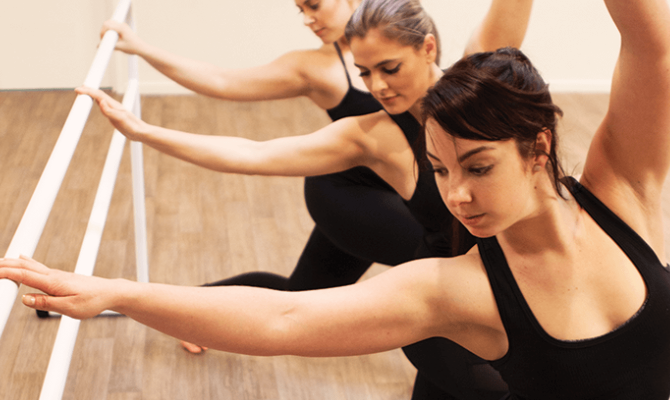Spotlight on Flora Tupufia
19 Mar 2021
3 May 2021

Barre was created by ballerina Lotte Berk in London in 1959 after injuring her back, combining ballet barre routines with rehabilitative therapy to form an exercise system.
So, you might be wondering “What does a barre class involve?” and “Do I need to be coordinated or flexible to do barre?” Maybe the thought of trying exercises based on ballet makes you nervous. Rest assured, you don’t have to be a classical ballet dancer to enjoy this workout, but having fun is a must! Learn how to transform your approach to movement and training through the Habit Health Barre class.
Our barre class introduces fundamental ballet positions and movements. There is no leaping and spinning on your toes and certainly no leotards or tutus. So, if you are rhythmically challenged, you needn’t be put off! Here’s a bit of insight into what the class entails.
The barre part of the class concentrates on maintaining good posture and alignment while challenging your glutes, quads and inner thighs. You won’t find yourself getting bored standing at the barre for 45 minutes, either as we focus on targeted areas to lengthen, tighten, tone and raise body awareness. On the mat, it's all about the core. We'll work on firing up your abdominal and stabiliser muscles. We don't miss out on the upper body either; there are enough plank holds and press‐ups that round out barre to make it a total body workout.
So how does barre differ from other workouts such as TRX suspension training, Power or strength-based personal training? A large proportion of any barre class consists of pulses or isometric contractions that teach the body how to create and develop positions of high stability. During isometric contractions the targeted muscle tenses without changing length. This bit of stress is enough to fire up the muscle, but not so big as to tear the muscle fibres. The key muscle groups that barre focuses on, optimise our general, everyday movements as well. There is a large focus on being ‘body aware,’ meaning we observe whole movements, instead of only training muscles in a non-functional sense.
Towards the end of class, you’ll experience a faster pace involving more parts of your body. The challenge gradually increases to lift the heart rate and push the aerobic system. These movements also teach your body to respond to and complete rapid, complex movements and patterns. Simply put, the way your body moves from A to B. Understanding how to move your body creates a sense of freedom and although this can be challenging and tiring, there is a huge sense of achievement from developing strength and mobility in such a fluid way.
Habit Health’s Barre class differs from other options because the content has been designed with our gym members in mind. You will get to experience stabilising, dance‐based movements like pliés and rises, as well as squats, lunges, plank holds and burpees - yes, burpees. Adding barre to your weekly gym programme will contribute to overall body awareness and develop optimal alignment. Training in this way can assist in injury prevention and is safe for a variety of abilities, using low impact and bodyweight only.
So what are you waiting for? Give barre a go at your next visit to the gym.
This article was written for Habit Health by Gina Andrews, Barre Instructor.